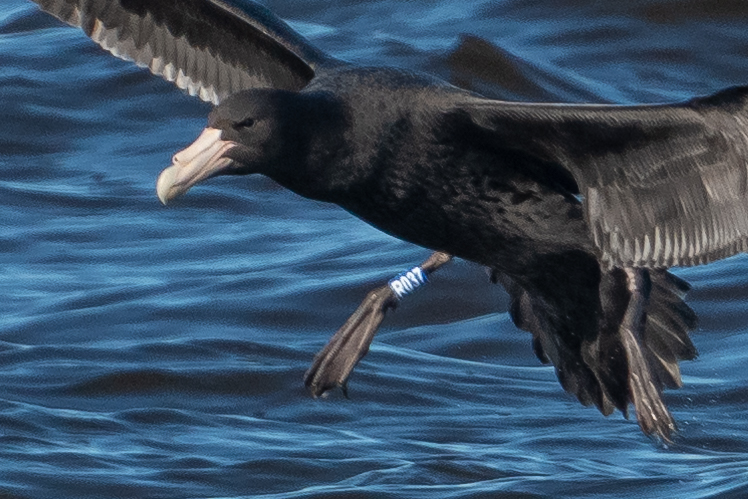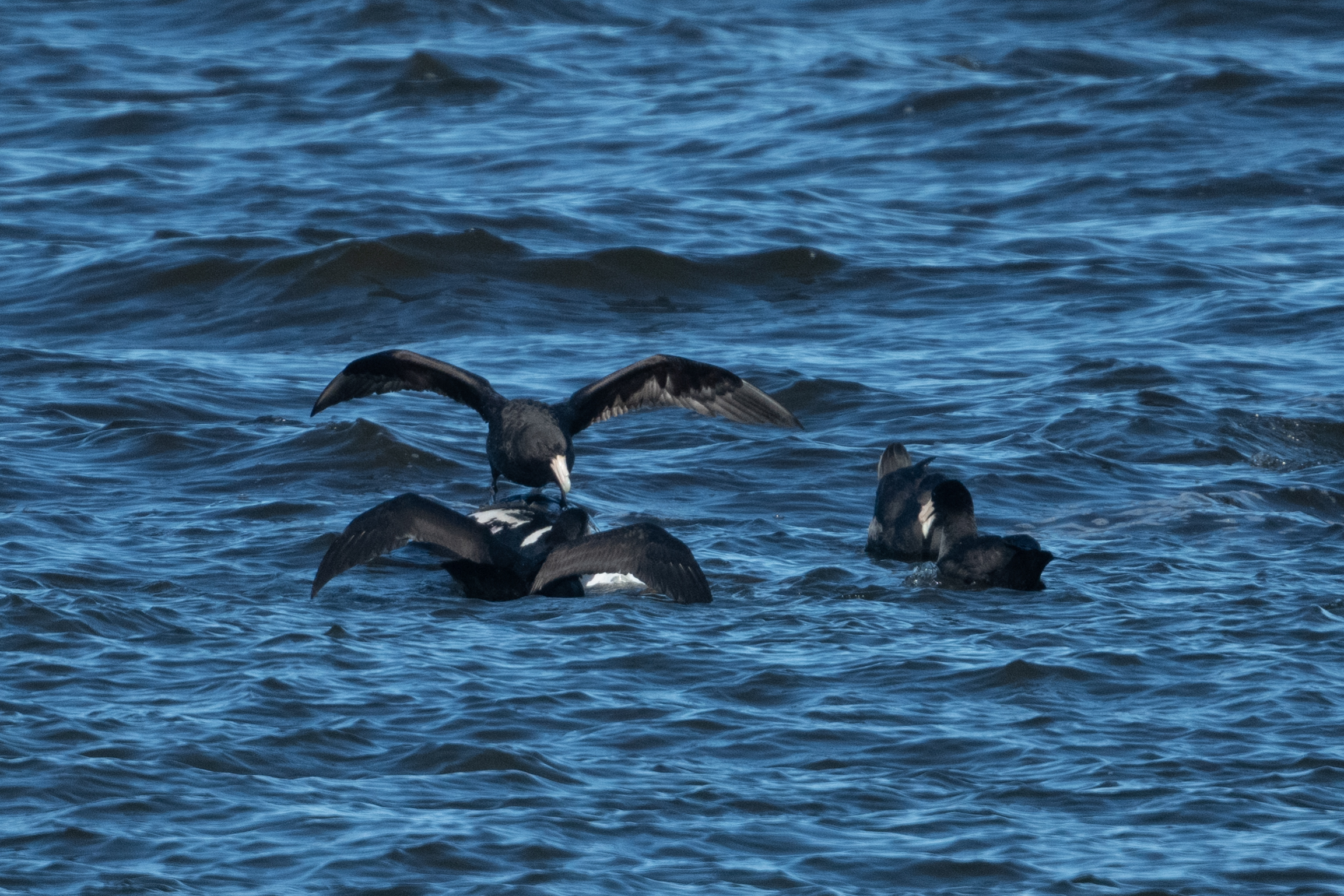
Southern Giant Petrel R037 off Montevideo
When Fernando Saravia reported to ACAP Latest News that he had photographed a colour-banded Southern Giant Petrel Macronectes giganteus (Least Concern) in Uruguayan waters off Montevideo on 30 June this year he probably had little idea what a mission it would be to track down from where the bird had originally come. From his photographs the bird can be readily identified as a juvenile, likely recently fledged due its uniform brown plumage, and the blue plastic band on its right leg can be read as R037 in white lettering. No metal band (which would carry a national banding address) can be seen on either leg.
A response to Fernando elicited that the Southern Giant Petrel was seen with other juveniles that were feeding on a dead South American Sea Lion Otaria byronia some 150-200 m from the shore at 34° 56'S, W 56° 10'E. He also said it was not an Argentinian-banded bird based on his initial enquiry.
Armed with the above information the hunt was on. Successive enquiries by ACAP and others to marine ornithologists who work in the Southern Ocean and to national banding schemes resulted in an e-mail string of over 35 messages and replies saying the bird was not one of theirs from Brazil, France, Germany, South Africa and the United Kingdom. The help of the Scientific Committee on Antarctic Research Expert Group on Birds and Marine Mammals (SCAR EG-BAMM) was then enlisted via its outgoing Secretary, Yan Ropert-Coudert, who sent out the bird’s sighting details to the group’s list of contacts.

Four juvenile Southern Giant Petrels gather round a seal carcass off Montevideo; photograph by Fernando Saravia
Eventually it was discovered that the bird was from Chile, having been colour-banded as a chick close to fledging on Islas Diego Ramírez by Cristián Suazo’s research group on 16 March 2022 (no metal band had been added). These islands are some 2600 km south of Fernando’s sighting in the South Atlantic Cristián has written to ACAP Latest News that he had arrived from the field to find Fernando’s email, saying “Great news since we just started the metal and colour banding of petrels to explore juvenile distribution with an emphasis on the domestic Chilean fisheries”, adding that “we previously thought that juveniles were more prone to first distribute along the Chilean coast (mainly in the Humboldt Current System)”.
Pleasing to resolve the mystery through the support of colleagues and confirm the value of international bodies such as ACAP and SCAR EG-BAMM in tracing down a banded bird – and also that young giant petrels are indeed ocean travellers!
With thanks to Fernando Saravia, Cristián Suazo and all the correspondents.
John Cooper, ACAP Information Officer, 25 July 2022

 English
English  Français
Français  Español
Español